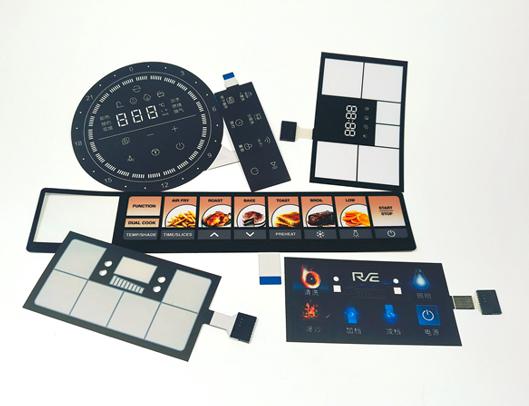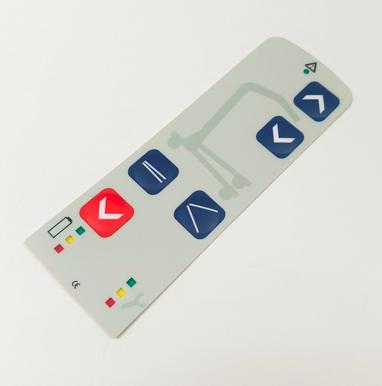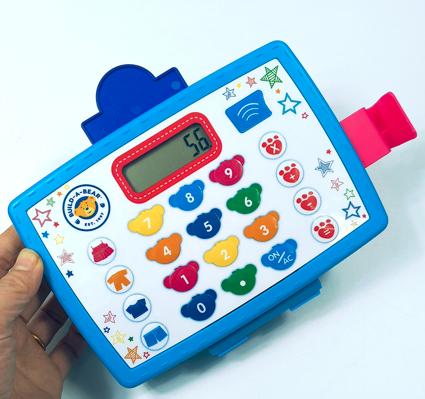Membrane Switch
2025-03-11
Membrane switch keypad: A Comprehensive Exploration of Their Significance, Features, and Applications
1. Introduction
In the realm of modern electronics and industrial control systems, membrane switches have emerged as an indispensable component. These compact, versatile, and highly reliable devices play a crucial role in enabling user - device interaction across a wide spectrum of industries. Membrane switches are not only a testament to the continuous advancements in materials science and manufacturing technology but also a key enabler for the development of sleek, efficient, and user - friendly products.

2. Definition and Structure
Membrane switch is a type of switch that consists of multiple layers of thin, flexible materials. The basic structure typically includes a top layer, which is often a graphic overlay made of polyester or polycarbonate. This layer serves as the interface that users interact with directly, presenting labels, symbols, and other visual cues for operation. Beneath the graphic overlay lies a conductive layer, usually made of silver ink (carbon ink) or a conductive polymer. This layer is responsible for carrying electrical signals when the switch is activated.
The middle layer is an insulator, which separates the conductive layers and prevents short - circuits. It is made of materials like adhesive and has precisely cut holes or regions that define the switch's activation points. Another conductive layer is placed beneath the insulator, and it works in tandem with the upper conductive layer. When pressure is applied to the top layer at a specific point, the two conductive layers come into contact through the cutouts in the insulator, completing an electrical circuit and sending a signal to the connected device.
3. Key Features
3.1 Durability
Membrane switches are engineered to withstand a high number of actuation cycles. They can endure millions of presses without significant degradation in performance. This makes them ideal for applications where frequent use is expected, such as in industrial control panels, automotive dashboards, and household appliance control interfaces. Their robust construction, with layers bonded together using advanced adhesive techniques, ensures resistance to wear and tear, even in harsh environmental conditions.
3.2 Customizability
One of the most remarkable features of membrane switches is their high degree of customizability. Manufacturers can create custom graphic overlays with unique shapes, colors, and legends to match the specific design requirements of different products. The size and layout of the switch elements can also be tailored according to the available space and user - interface design. This flexibility allows for seamless integration into a wide variety of products, from small handheld devices to large - scale industrial equipment.
3.3 Low Profile and Lightweight
Membrane switches are extremely thin, typically ranging from a few millimeters to less than a millimeter in thickness. This low - profile design makes them suitable for applications where space is at a premium, such as in mobile devices, tablets, and wearable electronics. Their lightweight nature also contributes to the overall portability and ease of use of the end - products.
3.4 Sealing and Environmental Resistance
These switches can be effectively sealed to protect against dust, moisture, and other contaminants. The sealing process ensures that the internal components of the switch are shielded from the external environment, enhancing their reliability and lifespan, especially in industrial and outdoor applications. They can operate in a wide range of temperatures and humidity levels, making them suitable for use in diverse climatic conditions.
4. Manufacturing Process
The manufacturing of membrane switches involves several precise steps. First, the graphic overlay is designed and printed using high - quality inks and printing techniques such as screen printing or digital printing. The conductive layers are then deposited onto the appropriate substrates. This can be done through methods like sputtering for ITO deposition or coating for conductive polymers.

The insulator layer is cut to the required shape and size using die - cutting or laser - cutting processes. The individual layers are then carefully aligned and bonded together using adhesives that are selected for their compatibility with the materials and their ability to provide a strong, durable bond. Finally, the assembled thin film switch undergoes rigorous quality control testing to ensure that it meets the required performance standards.
5. Applications
5.1 Consumer Electronics
In consumer electronics, membrane switches are widely used in products such as remote controls, keyboards, and touch - sensitive panels. They provide a simple and intuitive user interface for operating devices like televisions, DVD players, and audio systems. In mobile phones and tablets, they are often integrated into the touch - screen interfaces, contributing to the sleek and minimalist design of these devices.
5.2 Automotive Industry
Automotive dashboards are equipped with membrane switches for controlling various functions such as lights, wipers, and climate control systems. These switches offer a reliable and long - lasting solution for in - vehicle control, withstanding the vibrations, temperature variations, and frequent use that are characteristic of automotive environments. They also contribute to the modern and ergonomic design of the dashboard.
5.3 Industrial Control Systems
Industrial control panels rely heavily on membrane switches for their durability and customizability. They are used to control machinery, equipment, and production processes in factories, power plants, and other industrial settings. The ability to create custom - designed switches with specific functions and labels makes them an ideal choice for complex industrial control applications.
5.4 Medical Devices
In the medical field, membrane switches are used in a variety of devices, including patient monitors, infusion pumps, and diagnostic equipment. Their low - profile design, durability, and ease of cleaning make them suitable for use in medical environments where hygiene and reliability are of utmost importance.
6. Future Trends
As technology continues to evolve, membrane switches are expected to see further advancements. The development of new materials with improved conductivity, flexibility, and durability will likely lead to even more efficient and reliable switches. There is also a growing trend towards the integration of thin film switches with other technologies, such as touch - sensing and haptic feedback, to create more immersive and intuitive user experiences.
In addition, the demand for miniaturization and the increasing need for energy - efficient devices will drive the development of smaller, more power - conscious membrane switches. These trends will open up new opportunities for the use of membrane switches in emerging technologies such as the Internet of Things , where a large number of small, connected devices require simple and reliable user - interface components.
In conclusion, membrane switches have become an integral part of modern technology, offering a combination of features that make them suitable for a vast array of applications. Their durability, customizability, and low - profile design have made them a preferred choice for manufacturers across different industries. As technology progresses, these switches are likely to play an even more significant role in enabling the development of innovative and user - friendly products.




